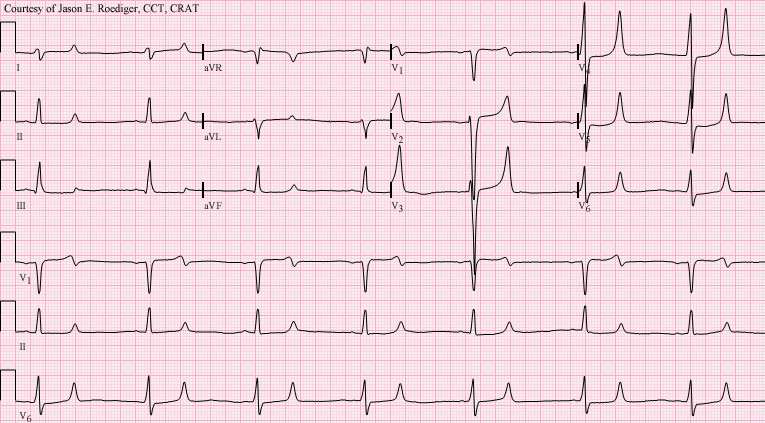A patient with a history of renal problems generalised weakness, palpitations and chest pain. His serum potassium levels are measured and come back at 8.2 mmol/L. An ECG is performed, and it shows some very alarming changes.
Show Answer
Hyperkalaemia is defined as a plasma potassium greater than 5.5 mmol/L.
Show Answer
The non-drug causes of hyperkalaemia include:
- Renal failure
- Excess potassium supplementation
- Addison’s disease (adrenal insufficiency)
- Congenital adrenal hyperplasia
- Renal tubular acidosis (type 4)
- Rhabdomyolysis
- Burns and trauma
- Tumour lysis syndrome
- Acidosis
Show Answer
Drugs that can cause hyperkalaemia include:
- ACE inhibitors
- Angiotensin receptor blockers
- NSAIDs
- Beta-blockers
- Digoxin
- Suxamethonium
Show Answer
The clinical features of hyperkalaemia are highly variable and can be very non-specific. They include:
- Weakness and fatigue
- Bradycardia (due to heart block)
- Palpitations
- Chest pain
- Shortness of breath
- Tachypnoea (due to respiratory muscle weakness)
- Muscle weakness
- Flaccid paralysis
- Depressed or absent tendon reflexes
Show Answer
Hyperkalaemia is associated with very distinctive ECG changes that progressively change as the K+ level increases:
- K+ >5.5 mmol/l – peaked T waves (usually earliest sign of hyperkalaemia), repolarisation abnormalities
- K+ >6.5 mmol/l – P waves widen and flatten, PR segment lengthens, P waves eventually disappear
- K+ >7.0 mmol/l – Prolonged QRS interval and bizarre QRS morphology, conduction blocks (bundle branch blocks, fascicular blocks), sinus bradycardia or slow AF, development of a sine wave appearance (a pre-terminal rhythm)
- K+ >9.0 mmol/l – Cardiac arrest due to asystole, VF or PEA with bizarre, wide complex rhythm.

ECG showing features of hyperkalaemia, including narrow-based, peaked T-waves and prolonged QT interval, image sourced from Wikipedia
Courtesy of Jason E. Roediger CC BY-SA 3.0






Thanks alooot
Quite informative and a different way of learning.